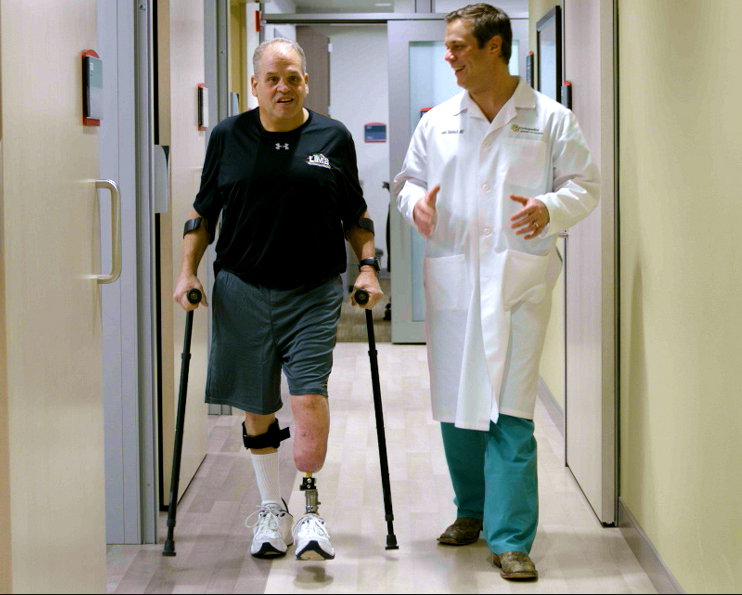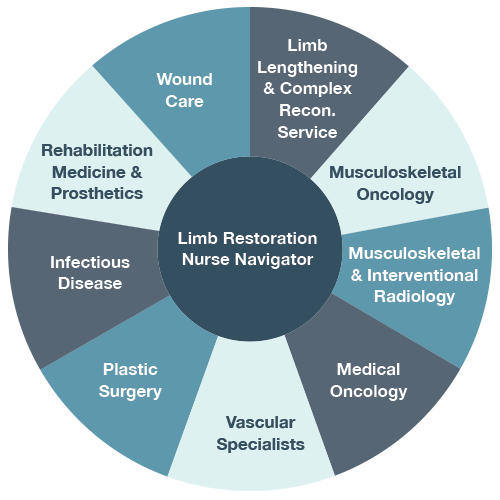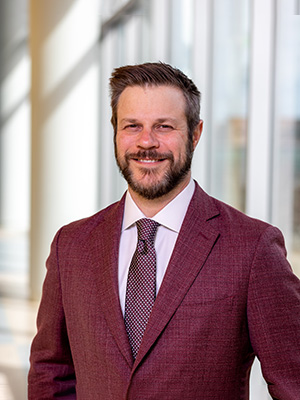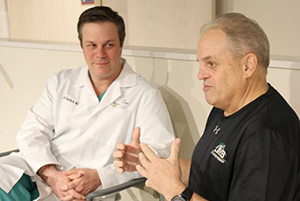"He told me, 'you're going to ride again,' and he got me here." - Archie Chant
What is Trauma Fracture?
Traumatic fractures occur in the presence of a significant impact or force. Most of these injuries would be considered “displaced” fractures. A displaced fracture occurs when there is a noticeable movement away from the normal position of the bone. This type of fracture cannot be repaired with standard castings or splints and will require surgical treatment such as resetting and realigning the fragment ends.

Trauma & Fracture
On any given day, our orthopedic surgeons are working to save a limb, stabilize a complex fracture, correct a deformity, or heal a bone infection. They're working with other doctors, coordinating your care with a rehabilitation specialist, or providing additional training to paramedics.
Our fellowship-trained traumatologists specialize in fracture care and work with a multidisciplinary team of providers to support your comprehensive health.
Learn More
Osseointegration
Osseointegration of the limb is a surgical procedure used for the permanent placement of artificial limbs connected to the human skeleton. A metal implant is inserted into the amputated extremity bone. The connector passes through the skin and attaches to the prosthesis. After several weeks, it integrates with the bone, allowing movement and pain relief. Osseointegration aims to offer a better quality of life and improved function and mobility to people who have had an amputation.
Learn More


Limb Restoration
There are many conditions and problems that can put your limbs at risk—infections, tumors, severe traumatic damage, and more. We offer unique treatment options to help you avoid amputation and maintain your quality of life.
The Limb Restoration Program unites doctors from multiple specialties in the care and preservation of your arm or leg. We meet every week to review and consult on all cases, ensuring collaboration and the best treatment plan for each individual patient.
Learn More

Jason Stoneback, MD
Vice Chair Clinical Affairs
Chief, Orthopedic Trauma and Fracture Surgery
Director, Limb Restoration Program
Jason Stoneback, MD, is the Chief of Orthopedic Trauma and Fracture Surgery and the Director of the Limb Restoration program at the University of Colorado Hospital. He specializes in the treatment of simple and complex fractures, nonunions, malunions, limb-length discrepancies, deformity correction, and limb salvage.
He is committed to his patients and their families, delivering care, compassion, innovation, and technology provided in a multidisciplinary fashion.

Best Hospital 2022-23
Ranked in 9 Specialties
Here, we see patients with complex trauma across the Rocky Mountain region and beyond.
Our world-renowned trauma team brings together a multidisciplinary unit that delivers quality care and the best possible outcomes unmatched anywhere else.
Here, what was once thought hopeless, finds a bright new future filled with possibility.
Our trauma and multidisciplinary team work at UCHealth, the only Level 1 Trauma Center in the state of Colorado, verified by the American College of Surgeons and designated by the Colorado Department of Public Health and Environment.
As a nationally ranked department and hospital by U.S. News and World Report, our team provides the highest-level trauma care in one facility.
Trauma, Fracture News & Videos
LOCATIONS
Osseointegration Program
UCHealth – Anschutz Medical Campus
Outpatient Pavilion, 4th Floor
1635 Aurora Court
Aurora, CO 80045
To schedule an appointment call: 1-844-800-LIMB (5462)
Limb Restoration Program
UCHealth – Anschutz Medical Campus
Outpatient Pavilion, 4th Floor
1635 Aurora Court
Aurora, CO 80045
To schedule an appointment call: 1-844-800-LIMB (5462
Fax: 720-848-1913
Email: [email protected]
